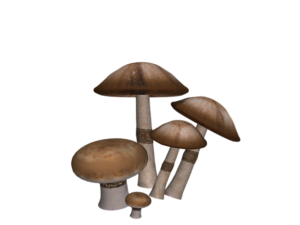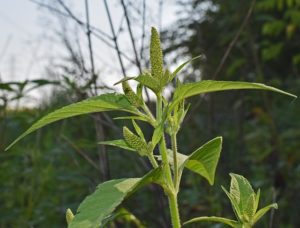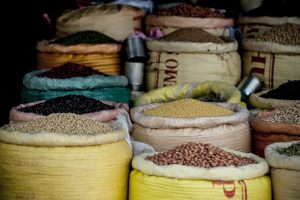People who eat vegetarian foods tend to consume high carb foods, missing out on fibre rich vegetarian foods high in protein. Many vegetarian foods containing protein only contain a few amino acids. These are the building blocks that makeup proteins that are needed for good health.
Poor dietary fiber and protein intake can lead to low energy levels, reduced immune function, and increased blood sugar imbalances. Ensuring that you get adequate protein and a high fibre diet will support a healthy vegetarian lifestyle in the long term. Knowing which foods contain both of these nutritional components can make this process easier and simpler.
Vegetarian Foods High in Protein and Fibre
Sea Vegetables

Sea vegetables may not be the first thing that comes to mind when thinking of foods for vegetarians high in fibre and protein.
But seaweeds like kelp, wakame, nori, dulse, bladderwrack, and sea lettuce are packed full of important nutrients to vegetarians. Seaweed can contain anywhere from 15% to 40% protein, containing all 8 essential amino acids. Raw or fresh seaweed contains approximately 1% dietary fibre, but the fibre content can rise as high as 30% once dried.
Seaweed is also one of the top dietary sources of iron, iodine, magnesium, potassium, copper, vitamin A, vitamin D, omega 3, 6, and 9 fatty acids.
Being such a powerhouse of good nutrition, it is a wonder that eating sea vegetables has not become more commonplace in the modern diet. Seaweeds can be easily purchased as dried whole fronds, strips, granules, and powder. Add kelp to stir-fries, soups, casseroles, and stews, or consume nori, sea lettuce, and dulse as dried snacks.
Mushrooms- An Excellent Vegetarian Choice
Mushrooms contain excellent amounts of protein and fibre for vegans and vegetarians. Though often thought of as a vegetable, mushrooms are actually fungi, which means it contains large amounts of whole protein with all 8 essential amino acids.
One cup of white button mushrooms can contain approximately 6g of protein and 1g of dietary fibre.
The dietary fiber in mushrooms consists of glucans and chitin, which have been researched to have special medicinal benefits once consumed.
According to a study published in “The Journal of Nutrition” in 2008. The fiber in white button mushrooms may stimulate the production of white blood cells that prevent infection. Other studies have also demonstrated mushrooms can balance hormones, protect against breast cancer, and support digestion. To spice things up, try out some exotic varieties of mushrooms, like shiitake, porcini, boletes, morels, oysters, and other wild seasonal species.
Grains & Cereals – High in Fibre and Protein
Grains like wheat, rye, barley, oats, and rice are often eaten for their high dietary fiber. But their high protein content should not be taken for granted. Though most grains are missing essential amino acids (lysine, methionine, and threonine in rice), the overall protein content ranges from 5% to 15%, depending on the grain. Cereals, pasta, toast, sandwiches, etc., all contribute to daily dietary protein. But focus more on whole grains from a mixture of plant species. Over-reliance on white bread in the Western world has increased people developing intolerances and sensitivities to gluten worldwide. The alternative between gluten-containing (wheat, barley, rye) and gluten-free (oats, corn, rice) grains.

Some species of grains do contain all 8 essential amino acids – namely quinoa and amaranth. Hence, these two grains are becoming increasingly popular among vegetarians and vegans.
Legumes
Legumes are vegetables from the Fabaceae family, including peanuts, peas, lentils, beans, soy, alfalfa, clover, and carob. While most legume family members miss important amino acids – tryptophan and methionine – soybeans are the exceptions.

Soybeans contain all 8 essential amino acids, which is why soy-based products like soy milk, tofu, tempeh, and whole soybeans are popular vegetarian foods high in protein and fibre.
Tofu can contain 10% protein and 1% dietary fibre, while whole soybeans can contain up to 36% protein and 10% dietary fibre. But be cautioned. Soybeans and other legumes are the highest food sources of estrogen-like compounds known as isoflavones.
Isoflavones should only be consumed moderately by men and avoided altogether in women with a history of hormone-related cancers. Also, you might like to read this post -.
